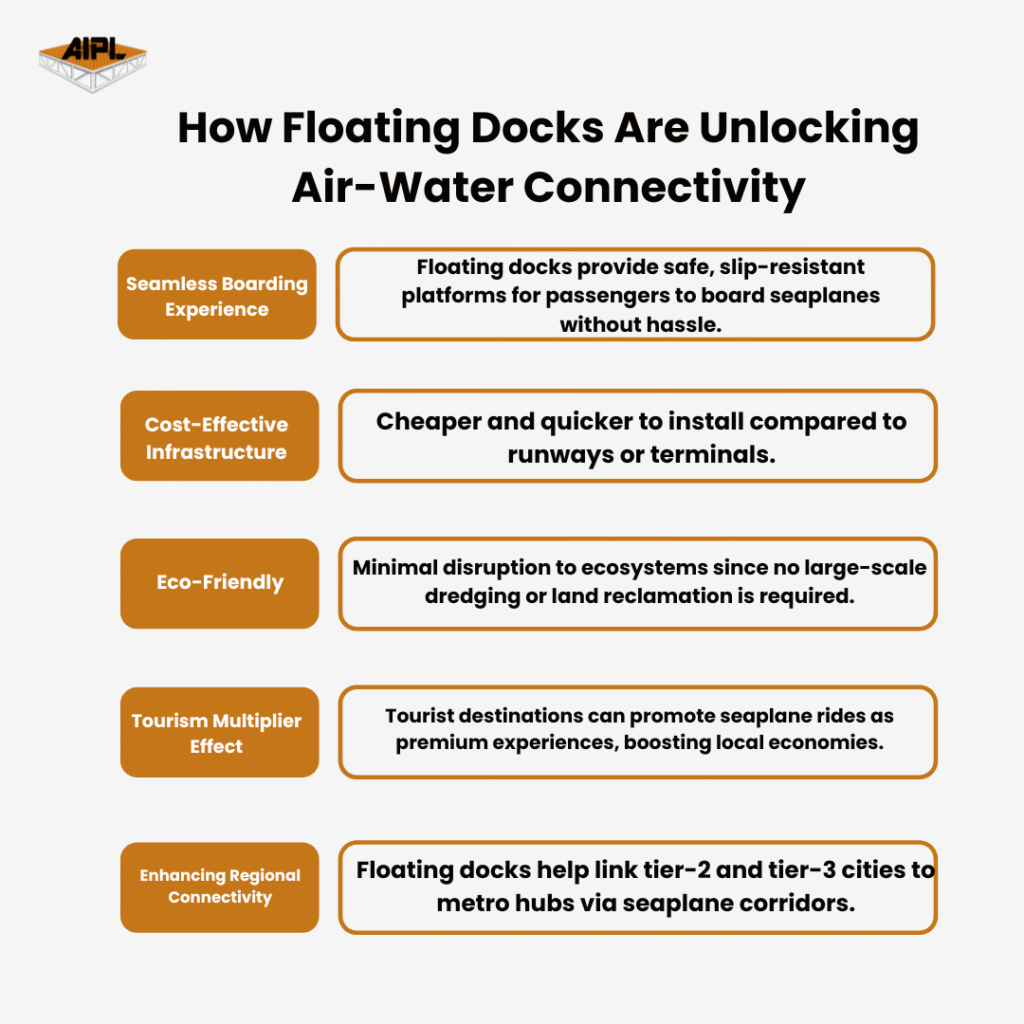
Imagine boarding a plane not from a crowded airport, but from a peaceful lakeside, riverbank, or coastal dock. This is no longer just a dream — seaplanes and their supporting floating docks are unlocking a new era of air-water connectivity in India.
As someone who closely follows India’s transport and tourism infrastructure, I see floating docks for seaplanes not just as engineering marvels but as game-changers for how we travel. They combine speed of aviation with accessibility of waterways, bridging gaps between cities, remote islands, and tourist hubs.
Floating docks for seaplanes are specially designed modular floating platforms that serve as take-off, landing, and docking points and a maintenance jetty for amphibious aircraft. Unlike conventional airports, these docks:
They are built using high-density polyethylene (HDPE), reinforced concrete pontoons, or steel structures, ensuring stability, buoyancy, and safety.
India’s geography makes it ideal for seaplane operations. With over 200 small airports and thousands of water bodies, many regions lack last-mile air connectivity. Seaplanes and floating docks can:
Example: The Sabarmati Riverfront, Ahmedabad, saw India’s first seaplane service in 2020, connecting to the Statue of Unity, using floating docks as boarding points.
The Government of India, under the Ministry of Civil Aviation and Sagarmala Programme, is promoting seaplane services across major tourist and strategic locations. Some proposed sites include:

Acquafront Infrastructure Pvt. Ltd. (AIPL), with its expertise in floating structures, is uniquely positioned to support India’s seaplane revolution.
AIPL’s Solutions Include:
By choosing AIPL, tourism boards, state governments, and private operators can accelerate the rollout of seaplane projects in India.
Q1. What is the purpose of floating docks for seaplanes?
Floating docks provide a stable, adaptable, and safe platform for seaplanes to dock, board passengers, and refuel.
Q2. How are floating docks better than traditional airports for seaplanes?
They are cost-effective, require less land, and adapt naturally to water levels, making them more versatile.
Q3. Where in India can seaplane services be launched?
Popular locations include Gujarat, Kerala, Odisha, Andaman & Nicobar Islands, and North-East India.
Q4. Are floating docks safe for passengers?
Yes, they are designed with anti-slip surfaces, railings, and secure anchoring systems for safe use.
Q5. How can AIPL support seaplane infrastructure projects?
AIPL offers end-to-end solutions in designing, manufacturing, and installing floating docks customized for seaplanes.
